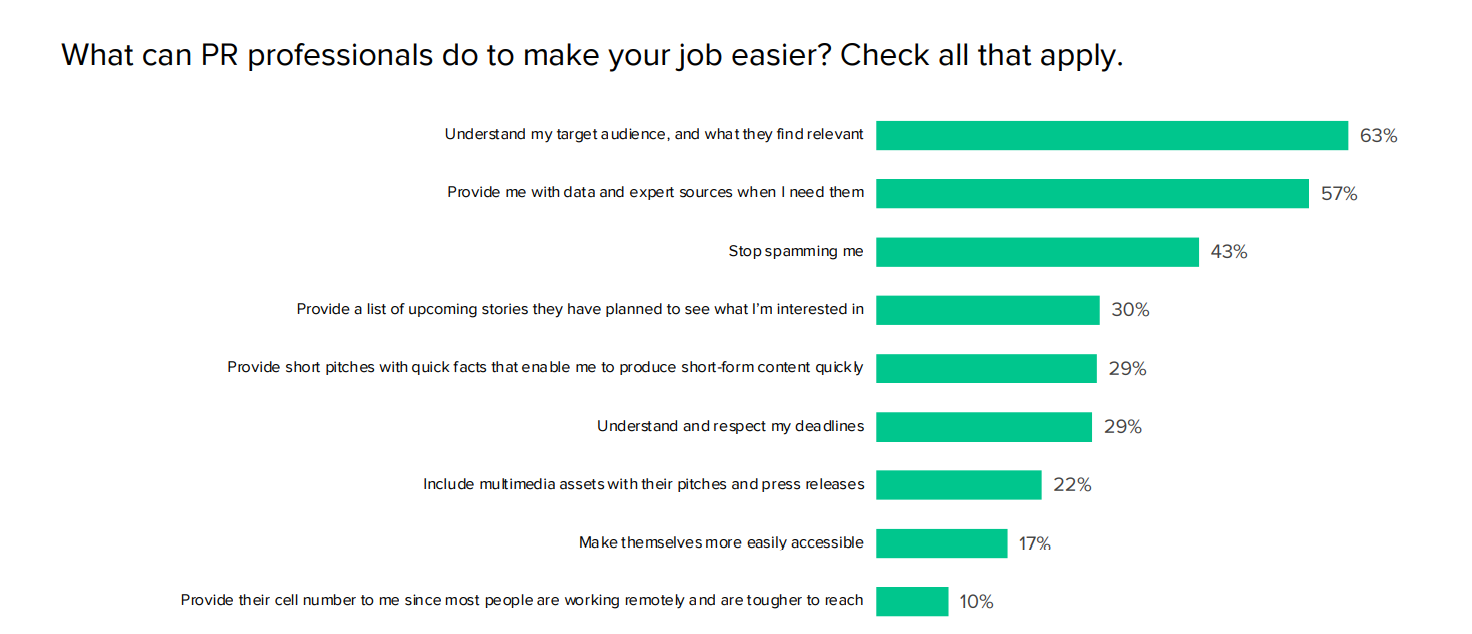Put away your Magic 8 Balls, set aside the tarot card deck and don’t even bother with Siri: The answers you’re looking for (at least as they pertain to PR) are right here in Cision’s latest State of the Media Report.
Released this week, Cision’s 13th annual report – based on a survey of over 3,800 journalists worldwide – addresses all your burning PR questions, from the types of content journalists want, to why they put PR pros on the “block/don’t call” list, to what it really takes for a pitch to grab their attention.
- Why don’t I get any response from my pitches? There are a number of possible reasons for this. According to the report, journalists are busier than ever: 43% cover 5 beats or more and nearly 30% file 10 or more stories a week. Not only do they have little time to review every pitch in depth – let alone respond to each one – the vast majority say most pitches they get aren’t even relevant to their audiences. (It’s also possible that if you’ve been “spamming” a journalist with irrelevant pitches or following up relentlessly, they might have blocked you entirely. That’s right – journalists spilled ALL the tea on what compels them to block a PR person.) The takeaway: Make sure you’re targeting the right journalists for your story; otherwise, you’re just wasting your time and theirs.
- Do press releases even matter anymore? YES! Very much so, in fact: 76% want to receive press releases from PR pros, and press releases are the #1 resource journalists rely on for generating stories or story ideas. Pro tip: When crafting your press release, avoid such words as “leading,” “unique,” “ground-breaking” and “innovative.” These are among the words journalists cited as being overused to the point where they’ve lost all impact. Press releases that include action words, however, (such as “allow,” “reveal,” “announce” and “confirm”) consistently see higher engagement on PR Newswire. Take that into consideration as you craft your press release headlines.
- How do I break through the noise to get journalists’ attention? In short, know your audience. Which means knowing their audience – and crafting pitches that reflect this understanding. When asked about the best way to make their jobs easier – in other words, removing obstacles that prevent them from covering your pitches – “understanding my target audience and what they find relevant” was the top answer, cited by 63% of respondents. In other words, do your homework to make sure you’re targeting the right journalists at the right outlets for the story, event or product you want them to cover. Then craft your pitch accordingly. The more you show you understand what the reporter covers (and can anticipate what they’d be interested in covering next) the more you will stand out. Journalists are so inundated with irrelevant, impersonal pitches they can’t help but notice the ones that are actually relevant.
- What are the rules for sliding into a reporter’s DMs? Speaking of standing out from the crowd, social media might sound like a good avenue for contacting a journalist in an attempt to stand out from the many PR pros flooding journalists’ inboxes, but don’t be so sure: While 23% of journalists say it’s A-OK for PR pros to contact them via social media, significantly more (34%) don’t want their DMs, and 12% say they’ll even block a PR pro who tries this tactic. (#yikes) When it comes to social media, most of the traditional rules of networking apply: Know your audience, be polite and be professional.
- What do journalists really want from PR pros? What does anyone want from the people they work with? To make their lives (and jobs) easier. For the report, Cision explicitly asked journalists how PR pros could make their lives easier. The top answers: Understand their audience and what they find relevant, provide them with data and expert resources when they need them; and stop spamming them with irrelevant pitches (see question #1 above).

In a nutshell, journalists need PR pros to exercise empathy and understanding when working with them. That includes everything from respecting their deadlines and responding quickly to their inquiries, to providing the assets, intel and other resources they need to do their jobs. With a better understanding of the challenges journalists face, PR pros can better serve their media partners and build strong professional partnerships that will serve them time and again.








